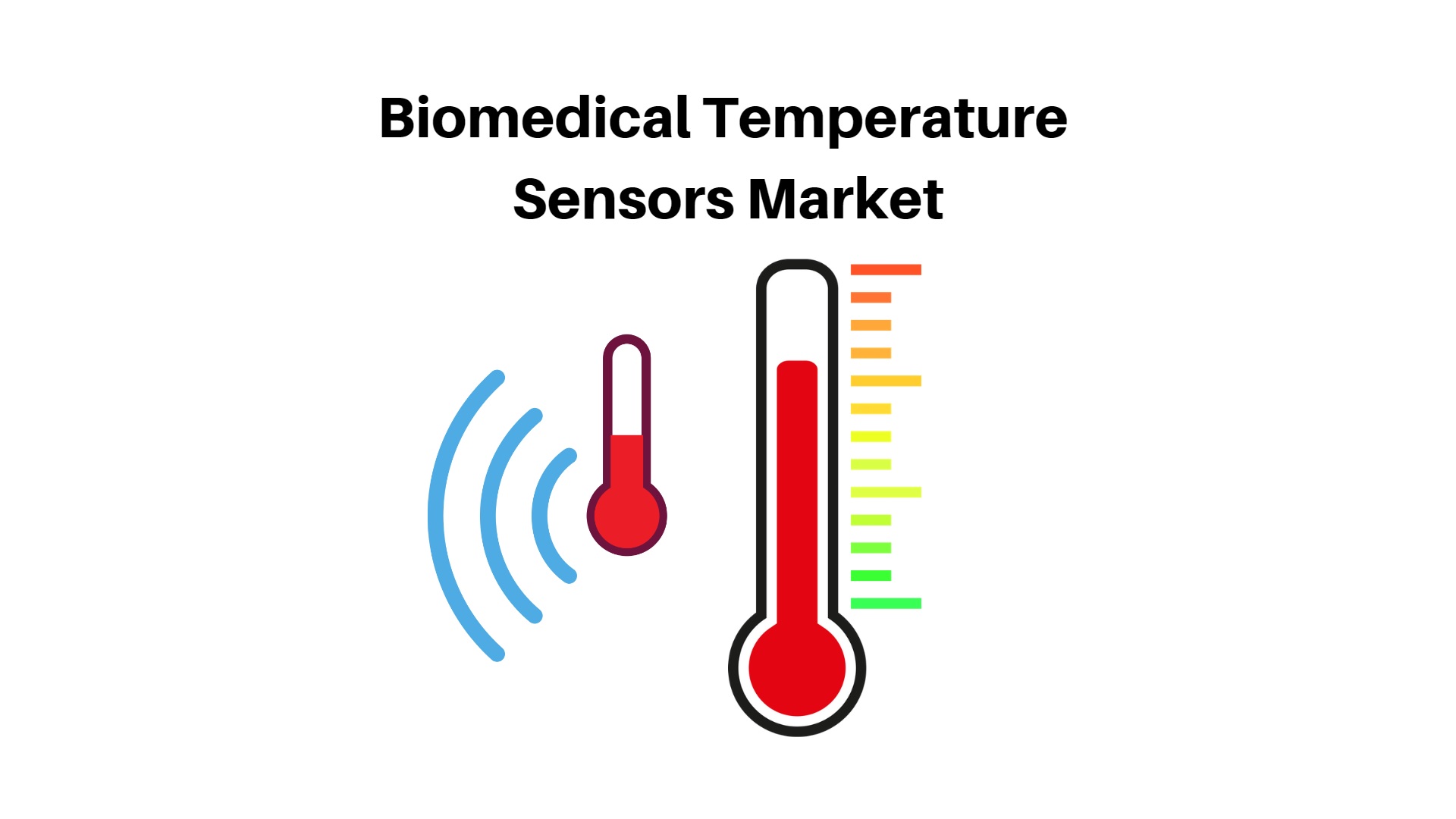Biomedical Temperature Sensors Market Economic Growth CAGR of 5.2%, 2022-2032

Page Contents
Market Overview
Published Via 11Press: The Biomedical Temperature Sensors Market size is expected to be worth around USD 4.8 Bn by 2032 from USD 2.9 Bn in 2022, growing at a CAGR of 5.2% during the forecast period from 2022 to 2032.
The Biomedical Temperature Sensors market has evolved significantly over the years, fueled by technological advancements and the growing need for non-invasive temperature monitoring in healthcare. Biomedical Temperature Sensors are essential devices used to measure body temperature, both internally and externally. These sensors play a critical role in various medical applications such as patient monitoring during surgery, post-operative care, and diagnosis of various diseases.
The global biomedical temperature sensors market is expected to grow exponentially in the coming years due to an increased demand for accurate and reliable temperature measurement devices. The rise in chronic diseases coupled with an aging population is also driving growth in this sector. Additionally, advancements in technology have led to the development of innovative products that offer better accuracy and ease of use. Companies are investing heavily in research and development activities to come up with new solutions that meet evolving client needs.
Request For Sample Report Here: https://market.us/report/biomedical-temperature-sensors-market/request-sample/

Key Takeaways
- Market Growth: The global biomedical temperature sensors market is projected to experience strong growth over the coming years, due to increasing demand for non-invasive temperature monitoring devices in healthcare.
- Increased Prevalence of Chronic Diseases: With the rising incidence of chronic illnesses like diabetes, cardiovascular diseases, and cancer, demand for biomedical temperature sensors has increased as these instruments are often employed to monitor patients' vital signs.
- Technological Advancements: The temperature sensing market is being propelled forward by technological advancements such as wearable sensors and wireless temperature monitoring systems.
- Increased Adoption of Home Healthcare: The growing trend towards home healthcare is fueling the growth in the biomedical temperature sensors market, as patients and their caregivers increasingly opt for non-invasive and convenient monitoring devices to keep track of their temperatures.
- Key Players: Some of the leading companies operating in the biomedical temperature sensors industry include GE Healthcare, Honeywell, STMicroelectronics, First Sensor, Medtronic, Smiths Medical, TE Connectivity, Analog Devices, Texas Instruments, NXP Semiconductor, Zephyr Technology, Nonin Medical
Regional Analysis
- North America is the leading market for biomedical temperature sensors, due to its established healthcare infrastructure, increasing home healthcare adoption rate, and rising prevalence of chronic illnesses.
- Europe is a significant market for biomedical temperature sensors, driven by the rising demand for non-invasive temperature monitoring devices and personalized medicine's growing acceptance.
- Asia Pacific: The Asia Pacific region is expected to experience the highest growth in the biomedical temperature sensors industry, due to increasing demand for healthcare services, rising healthcare expenditure, and growing awareness about health monitoring's importance.
- Latin America The market in Latin America is expected to experience significant growth due to increased government initiatives to upgrade healthcare infrastructure and rising investments by key players within the region.
- The Middle East and Africa region is expected to experience moderate growth in the biomedical temperature sensors market, due to increasing demand for non-invasive temperature monitoring devices and rising healthcare expenditure.
Browse the summary of the report and Complete Table of Contents (TOC): https://market.us/report/biomedical-temperature-sensors-market/table-of-content/
Drivers
Non-invasive Temperature Monitoring is on the Rise: Non-invasive temperature monitoring is becoming more and more popular, offering patients and healthcare providers a convenient alternative to invasive procedures. Biomedical temperature sensors are becoming increasingly popular for this purpose.
Increased Prevalence of Chronic Diseases: With the rising incidence of chronic illnesses like diabetes, cardiovascular diseases, and cancer, demand for biomedical temperature sensors is growing as these tools are essential in monitoring vital signs and managing these conditions.
Technological Advancements: The temperature sensing market is driven by technological advancements in temperature sensing technology, such as wearable sensors and wireless temperature monitoring systems that offer greater precision, convenience, and ease of use.
Increasing Adoption of Home Healthcare: The growing trend towards home healthcare is fueling the demand for biomedical temperature sensors, as patients and their caregivers increasingly opt for non-invasive and convenient monitoring devices.
Government Initiatives: Governments around the world are taking steps to modernize healthcare infrastructure and offer better services to their citizens, which in turn has spurred demand for biomedical temperature sensors.
Growing Aging Population: As our society's elderly population ages so makes the demand for biomedical temperature sensors. Elderly individuals are especially vulnerable to chronic illnesses and require regular monitoring of their vital signs for health purposes.
Restraints
High-Cost: Biomedical temperature sensors can be pricey, which limits their adoption in developing countries with limited healthcare budgets.
Lack of Awareness: Many healthcare providers and patients may not be aware of the advantages of biomedical temperature sensors or may not understand how to utilize them correctly, which could limit their adoption. Biomedical temperature sensors face stringent regulatory requirements, Biomedical temperature sensors must meet stringent regulations, which can add time and expense to product development as well as restrict market entry for new players.
Technical Limitations: Some biomedical temperature sensors may have technical shortcomings, such as poor accuracy or reliability, which could limit their utility and adoption.
Privacy Concerns: Utilizing biomedical temperature sensors for vital signs monitoring can raise privacy issues, particularly if the data isn't securely stored or managed properly.
Competition from Alternative Technologies: Biomedical temperature sensors must contend with competition from infrared thermometers and digital thermometers, which could limit their adoption.
Opportunities
- Growing Demand for Wireless Temperature Monitoring Systems: The rising popularity of wireless temperature monitoring systems presents an exciting opportunity for the biomedical temperature sensors market, as these systems offer greater convenience, precision, and ease of use.
- Emerging Markets: The expanding healthcare infrastructure and rising healthcare expenditure in emerging countries such as China and India provide significant growth prospects for the biomedical temperature sensors market.
- Personalized Medicine: The growing trend towards personalized medicine presents an opportunity for the biomedical temperature sensors industry, as this type of healthcare requires frequent and accurate monitoring of patient's vital signs.
- Technological Advancements: The rapid advancements in temperature sensing technology, such as miniaturized and low-cost sensors, present opportunities for the biomedical temperature sensors market to expand into new applications and markets.
- Home Healthcare: The growing adoption of home healthcare presents a major opportunity for the biomedical temperature sensors market, as patients and their caregivers increasingly prefer non-invasive and convenient temperature monitoring devices.
- Collaboration and partnerships: Collaboration and partnerships among key players in the biomedical temperature sensors industry can lead to the creation of innovative products and solutions that address unmet needs, stimulating market expansion.
Challenges
- Technical Challenges: Constructing accurate and dependable biomedical temperature sensors can be a formidable task, particularly for complex applications like continuous temperature monitoring.
- Regulatory Challenges: Biomedical temperature sensors must abide by stringent regulatory requirements, which can add an unnecessary layer of time and expense to product development while restricting market entry for new players.
- Data Security and Privacy Concerns: Utilizing biomedical temperature sensors for vital signs monitoring can raise data security and privacy issues, particularly if the data isn't properly secured or managed.
- Competition from Alternative Technologies: Biomedical temperature sensors must contend with competition from other technologies, such as infrared thermometers and digital thermometers, which could limit their adoption.
- Cost Constraints: The high cost of biomedical temperature sensors may prevent their widespread adoption, especially in developing countries with limited healthcare budgets.
- Limited Healthcare: Access Limited healthcare access in some regions, particularly developing nations, can restrict the adoption of biomedical temperature sensors as patients may not have access to facilities where these devices are utilized.
Report Scope
| Report Attribute | Details |
| The market size value in 2022 | USD 2.9 Bn |
| Revenue forecast by 2032 | USD 4.8 Bn |
| Growth Rate | CAGR Of 5.2% |
| Regions Covered | North America, Europe, Asia Pacific, Latin America, and Middle East & Africa, and the Rest of the World |
| Historical Years | 2017-2022 |
| Base Year | 2022 |
| Estimated Year | 2023 |
| Short-Term Projection Year | 2028 |
| Long-Term Projected Year | 2032 |
Key Market Segments
Type
- Thermocouples
- Thermistors
- Fibre Optic Sensors
- Infrared Sensors
- Liquid Crystal Temperature Sensors
- Others
Application
- Pharmaceutical
- Healthcare
- Others
Key Market Players
- GE Healthcare
- Honeywell
- STMicroelectronics
- First Sensor
- Medtronic
- Smiths Medical
- TE Connectivity
- Analog Devices
- Texas Instruments
- NXP Semiconductor
- Zephyr Technology
- Nonin Medical
Frequently Asked Questions
What is the market study period?
The Biomedical Temperature Sensors industry is studied from 2017 – 2032.
What is the growth rate for the Biomedical Temperature Sensors Market?
The Biomedical Temperature Sensors Market is growing at a CAGR of 5.18%
Who are the major players in the Biomedical Temperature Sensors Market?
GE Healthcare, Honeywell, STMicroelectronics, First Sensor, Medtronic, Smiths Medical, TE Connectivity, Analog Devices, Texas Instruments, NXP Semiconductor, Zephyr Technology, Nonin Medical
The team behind market.us, marketresearch.biz, market.biz and more. Our purpose is to keep our customers ahead of the game with regard to the markets. They may fluctuate up or down, but we will help you to stay ahead of the curve in these market fluctuations. Our consistent growth and ability to deliver in-depth analyses and market insight has engaged genuine market players. They have faith in us to offer the data and information they require to make balanced and decisive marketing decisions.



